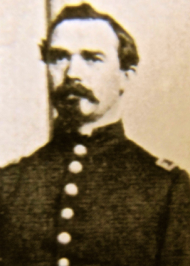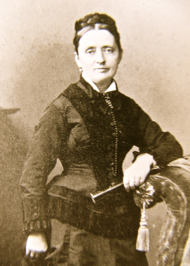steinway family exhibit
Städliches Museum, Seesen
Lower Saxony
northern Germany
europe
October 5, 2011


steinway family exhibit
Städliches Museum, Seesen
Lower Saxony
northern Germany
europe
October 5, 2011


By the time Heinrich Engelhard Steinweg, born in Wolfshagen in the Harz Mountains, had arrived in Seesen, he already had lead an eventful life. Family tragedies such as the death of his parents and most of his siblings (when the family’s house caught fire during a lightening storm) had left their mark on his youth. He had already served his term of military service with General Blücher’s troops in the Battle of Watterloo against Napoleon. In Seesen, his fortunes improved and his marriage to Johanna Juliane Henriette Thiemer (1804-1877) on May 15, 1825 flourished. After his marriage, Henry Engelhard Steinway was able to gain entry to new social circles through his wife. His wedding gift to his bride was a square piano, the first piano he built. That year, he was able to open a business as an organ builder and carpenter. On a financial footing, he dedicated himself to his passion, the building of musical instruments on a professional level. The couple’s ten children included six sons and four daughters as follows:
Christian Friedrich Theodor Steinweg / C.F. Theodor Steinway (1825-1889)
Doretta Steinweg (1827-1900) who married Jacob Ziegler
Christian Karl Gottlieb Steinweg / Charles G. Steinway (1829-1865)
Johann Heinrich Steinweg / Henry Steinway Jr. (1830-1865)
Johanna Henrietta Wilhelmina Steinweg (1833-1875) married Theodore Vogel
Wilhelm Johann Heinrich Hermann Steinweg / William Steinway (1835-1896)
Johann Heinrich Hermann Steinweg (1836-1850)
J.H. Juliane Steinweg died in infancy
Georg August Albert Steinweg / Albert Steinway (1840-1877)
Anna Steinweg (1842-1861)
The company grew rapidly, and the family moved into a larger house in Seesen in 1829. Henry Engelhard Steinway called himself “H. Steinweg, builder of musical instruments in Seesen” from 1836 onwards, perhaps marking the year of completion of his first grand piano. News of his pianos soon spread. After their lessons in the Jacobsen School, the sons were employed in the family business from an early age, and in this way learned their trade. After the family emigrated to America in 1850, many of these children would take on leading positions at Steinway & Sons. Exhibiting a natural talent for craftsmanship, marketing, or business, each of the Steinway offspring played their role. Though the name of the company referred only to the male heirs, the female members of the family played important roles in the establishment of the company in America. Doretta, herself a concert-level pianist, gave piano lessons to those who purchased the Steinway & Sons pianos. Mrs. Henry Engelhard Steinway was indispensable in the management of the business, as her husband could neither read nor write and never learned to speak English. Theodore, and later, his nephew, Henry Ziegler, son of Doretta Steinway and Jacob Ziegler, lead the family in inventions that eventually created the modern-day piano. William, on the other hand, was a master of marketing. He was co-founder of Steinway and Sons in 1853, along with his brother, Charles and his father. He became head of the firm in 1899. In 1861, only eight days after the first shots rang out at the start of America’s Civil War, and three days before his marriage, William Steinway began keeping a diary, documenting his life, until his death in 1896, The notations that marked these years eventually filled nine volumes.* In 1866, he erected Steinway Hall, a place for the exhibition of the highest musical skill, a huge success for the company. He also founded the Steinway Concert and Artist Department and moved the factory from Park Avenue, Manhattan (where the Seagrams Building stands today) to Astoria, Queens, establishing the Steinway Piano Factory. To house the workers of the factory and their families, he constructed Steinway Village, complete with a church, library, kindergarten and a public trolley line. On a trip to Germany in 1888, William Steinway met Gottlieb Daimler, the two men, having in common the fact that each had established companies that provided, respectively, the most finely crafted pianos and the best engineered motor cars in the world. Steinway was given the rights to build Daimler engines in America, and also built an early automobile, the Steinway Mercedes. After his death in 1896, the family sold the factory to General Electric; however, as a note of legacy in the automobile industry, the hand-polished wood that is in Mercedes‘ luxury model, Maybach, is made today in the Steinway factory in Hamburg, Germany. In the 1890‘s, William Steinway’s horse-drawn trolley line in Astoria, was expanded to Manhattan beneath the East River in a tunnel named the Steinway Tunnel, a project that would eventually lead to the establishment of the IRT Line. The earth removed from beneath the river created the tiniest island in the middle of the East River, unofficially named U Thant Island in 1977***. William Steinway also served as head of the New York Subway Commission, the group that planned the New York City subway network. In 1929, the land upon which a beach resort area that William Steinway developed just north of Astoria in North Beach, became known as the North Beach Airport, later named LaGuardia Airport.
*NOTE: The William Steinway Diary was donated to the Smithsonian by Henry Ziegler Steinway in 1996, the 100th anniversary of the death of his grandfather, William Steinway. The diary was exhibited at the Smithsonian National Museum of American History in Washington, D.C. in 2010, the exhibition entitled “Gateway to the 19th Century: The William Steinway Diary 1861-1896”. The diary can be viewed online at the William Steinway Diary website from the Smithsonian Museum. The link:
http://americanhistory.si.edu/steinwaydiary/
** NOTE:
How Henry Steinway Ziegler and his siblings are double Steinways:
Henry Engelhard Steinway’s daughter, Doretta Steinway (1827-1900), married Jacob Ziegler.
Doretta and Jacob Ziegler produced two sons and two daughters. Their son, Henry Ziegler, married Albertina Vogel, daughter of Doretta’s younger sister, Wilhelmina Steinway Vogel (1833-1875), and her husband, Theodore Vogel. Therefore, Henry Ziegler and Albertina Vogel Ziegler were first cousins. Henry Ziegler served as Vice President of Steinway. This happy couple then produced two children, a son and a daughter. Their son, Frederick J. Ziegler married Alice Cantwell in 1930. They were the parents of my husband, Henry Steinway Ziegler, his brother John Cantwell Ziegler and their sister, Eleanor Ziegler Lodge, Mrs. Henry Sears Lodge. Perhaps this explains two things: how the Ziegler and Steinway names seem to be so interchangeable. For example, Henry Steinway Ziegler’s first cousin was named Henry Ziegler Steinway, who served as President of the piano company between 1937 and 1980. The “double Steinway” genes are apparent in the children of Henry Steinway Ziegler’s offspring as his son, Frederick Steinway Ziegler, bears a striking resemblance to William Steinway (President of Steinway & Sons 1853-1896); and, his younger son, Timothy Ostrom Ziegler resembles Henry Steinway, Jr. (Partner of Steinway & Sons 1853-1865).
***LAST NOTE.... last but not least
The story of U Thant Island: In 1977, a small group of employees of the United Nations who gathered for meditation, calling themselves the Peace Meditation at the United Nations, were followers of the guru Sri Chinmoy, who served as interfaith chaplain at the UN. They leased the island from New York City, greened its surface, and unofficially renamed it after the Burmese former UN Secretary General, U Thant. It is now the site of a metal “Oneness Arch” preserving personal items from its namesake.
PHOTOS: Top Row: 1. Henry Engelhard Steinway, founder of Steinway & Sons. 2. Henry Steinway, Jr., son of Henry Engelhard Steinway, Partner of Steinway & Sons. He died of tuberculosis in 1865, shortly after returning from a trip to Cuba where he had hoped the warmer climate would improve his health. 3. Charles G. Steinway in his uniform as paymater of the 5th Militia Regiment, Union Army. He was responsible for the completion of a new addition to the Steinway piano factory and also negotiated with the labor unions to avoid union strikes and to protect the factory from arson by Civil War draft resisters. He died of typhoid fever while on a vacation trip to Germany. Middle Row: 1. Doretta Steinway Ziegler, mother of Henry Ziegler (bottom row, #3). 2. William Steinway, described as urbane, confident and extroverted. He is credited with the successful marketing and promotion of Steinway pianos, developing the dealer network in America and agents around the world. Politically active in the city, he was at the helm of the Steinway firm during a crucial period of expansion and modernization. When he died of typhoid fever in 1896, he was eulogized by the editor of the New York Times and the mayor of New York City ordered flags flown at half-staff. 3. Wilhemina Steinway Vogel, mother of Albertina Vogel and and mother-in-law of Henry Louis Ziegler. Bottom Row: 1. Albert Steinway, one of the two Steinway sons (along with William) considered to be the most Americanized. 2. First-born Theodore Steinway, who remained in Germany, opened the Steinway Piano factory in Hamburg and is credited with revolutionizing piano making. He relied on his nephew, Henry Louis Ziegler as Vice President of the firm, to be his ‘eyes, ears an hands’ in New York. 3. Henry Louis Ziegler, grandson of Henry Engelhard Steinway, son of his daughter, Doretta Steinway Ziegler and her husband Jacob Ziegler.

Family History








